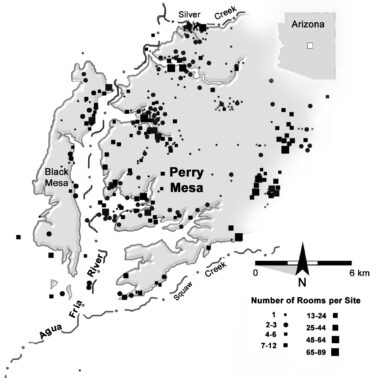David Abbott – “It’s All About Scale: Polity and Alliance in Prehistoric Central Arizona”

The Pueblo IV period (ca. A.D. 1275-1400) in the American Southwest was characterized by political upheaval and population distributions for defense. In central Arizona, a large-scale confederation, labelled the Verde Confederacy, may have stretched along the middle and lower reaches of the Verde River and over to Perry Mesa. It is said to have formed during the preceding period and ultimately incorporated large populations and an expansive territory for purposes of warfare against Hohokam enemies to the south. The Verde Confederacy may have been designed to provide for mutual security, such as a network of line-of-sight relationships that provided an early-warning mechanism and the means to mobilize assistance to neighboring parts of the alliance. Atop Perry Mesa, the settlement arrangements indicate large pueblos were strategically built as components of an integrated defense in which the people of each pueblo protected the backs of the others while blocking access to all routes up the steep canyon walls from the foothills below.
The hypothesized scale of the Verde Confederacy was regional in size. It may have included ~12,000 members living at ~135 settlements, and a swath of land 125 km in length. If so, the confederacy was organized at a scale that would have made it the largest alliance of its time. But, did it truly exist? Multiple lines of evidence have been brought to bear to address this question, including climate data, agricultural production, architectural building sequences, ceramic manufacture and exchange, and the spatial distribution of race tracks.
 All Posts
All Posts